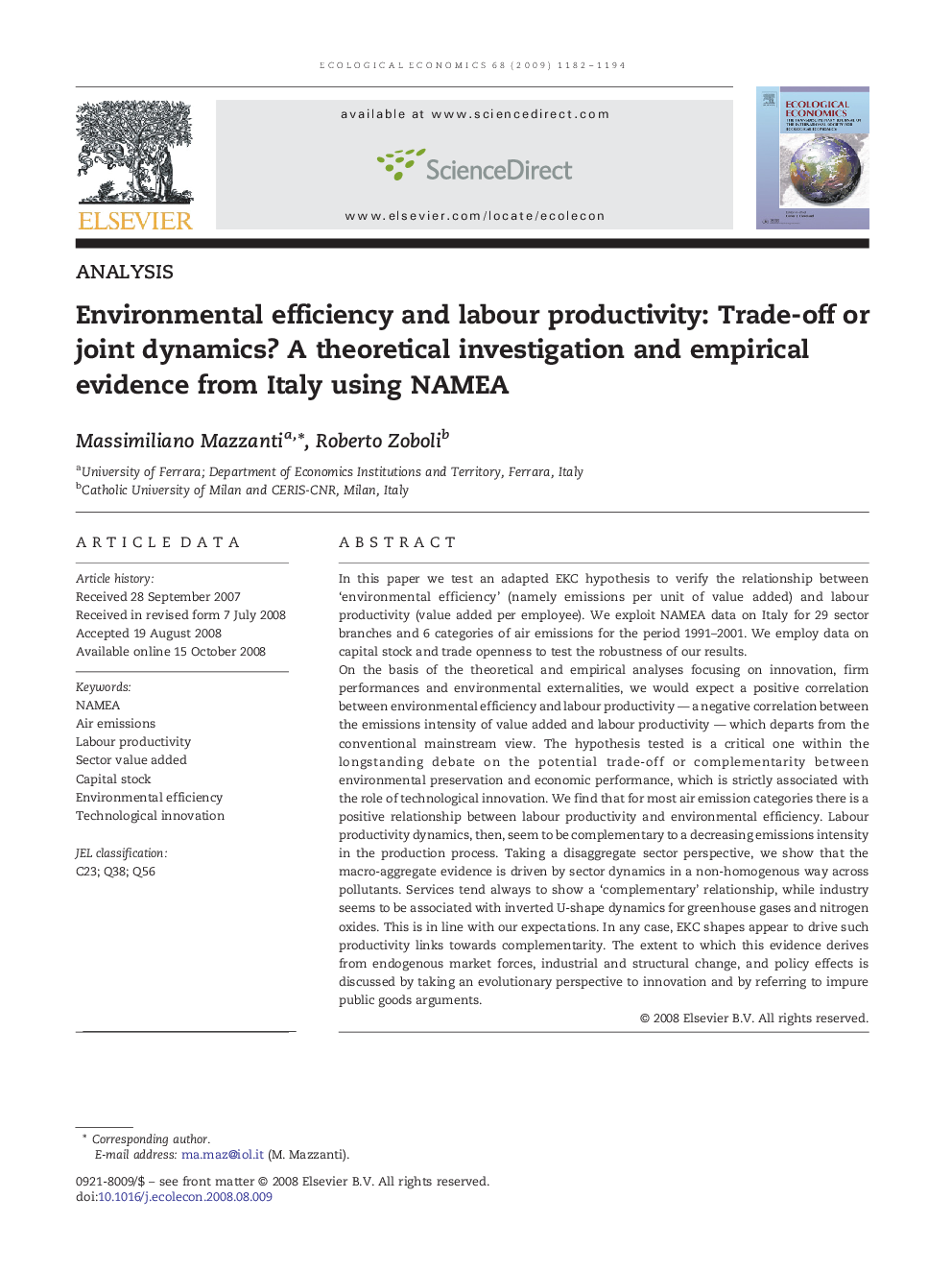| کد مقاله | کد نشریه | سال انتشار | مقاله انگلیسی | نسخه تمام متن |
|---|---|---|---|---|
| 5051385 | 1371122 | 2009 | 13 صفحه PDF | دانلود رایگان |

In this paper we test an adapted EKC hypothesis to verify the relationship between 'environmental efficiency' (namely emissions per unit of value added) and labour productivity (value added per employee). We exploit NAMEA data on Italy for 29 sector branches and 6 categories of air emissions for the period 1991-2001. We employ data on capital stock and trade openness to test the robustness of our results.On the basis of the theoretical and empirical analyses focusing on innovation, firm performances and environmental externalities, we would expect a positive correlation between environmental efficiency and labour productivity - a negative correlation between the emissions intensity of value added and labour productivity - which departs from the conventional mainstream view. The hypothesis tested is a critical one within the longstanding debate on the potential trade-off or complementarity between environmental preservation and economic performance, which is strictly associated with the role of technological innovation. We find that for most air emission categories there is a positive relationship between labour productivity and environmental efficiency. Labour productivity dynamics, then, seem to be complementary to a decreasing emissions intensity in the production process. Taking a disaggregate sector perspective, we show that the macro-aggregate evidence is driven by sector dynamics in a non-homogenous way across pollutants. Services tend always to show a 'complementary' relationship, while industry seems to be associated with inverted U-shape dynamics for greenhouse gases and nitrogen oxides. This is in line with our expectations. In any case, EKC shapes appear to drive such productivity links towards complementarity. The extent to which this evidence derives from endogenous market forces, industrial and structural change, and policy effects is discussed by taking an evolutionary perspective to innovation and by referring to impure public goods arguments.
Journal: Ecological Economics - Volume 68, Issue 4, 15 February 2009, Pages 1182-1194